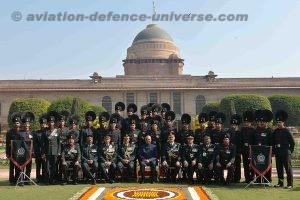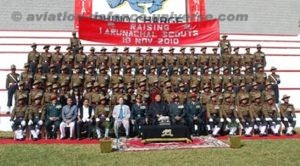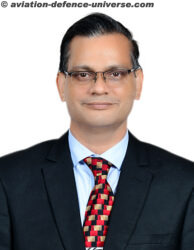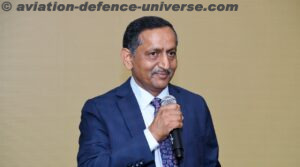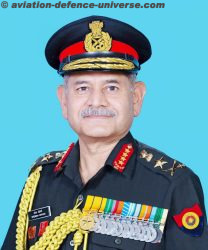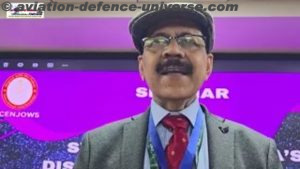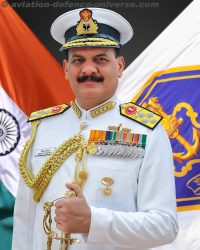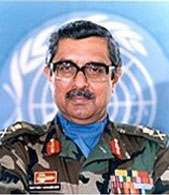
- Outstanding & unmatched officer-troop relation
New Delhi. 14 January 2022. “The officer-man relationship and the junior leadership provided by our officers at battalion and equivalent level or below are absolutely outstanding and unmatched which is proven time and again by the casualty ratio in battle and in counter-insurgency operations,” asserted Padma Bhushan Lieutenant General Satish Nambiar PVSM ,AVSM ,Vr C. (Retd.) in an exclusive interview to Aviation & Defence Universe(ADU).
ADU. Does Manpower Management in the Indian Army need a new Strategy?
Lt.GenSN. There is no need for any “New Strategy” for manpower management in the Indian Army. What is required “Will, Determination and Sense of Purpose” to implement existing recommendations contained in the many reports that are lying in the Ministry of Defence and Army Headquarters. More particularly on aspects like:
- Making the terms and conditions for Short Service Commissions in the Army more appealing to attract well qualified and motivated youngsters to join in greater numbers. By providing those who wish to leave on completion of the initial terms, with skills and higher educational qualifications that enable them to resettle in the civilian arena, including the corporate world.
- One of the long recommended measures towards this end, which also applies to those who join in the rank and file and wish to leave after completing “colour service”. Of lateral absorption into other Central and State Government Services and Organisations, Central Police Organisations, State police, and so on. A recommendation that has even been endorsed by Parliamentary Standing Committees on Defence, but effectively stymied by vested interests in the bureaucracy and police. There can be no better utilization of trained, disciplined manpower and, even more importantly, a reduction in the pension bill of the Defence Ministry.
ADU. Will Integrated Battle Groups help in strengthening the Army?
Lt.GSN. No reason for any doubt provided the concept is imaginatively welded into the operational plans, and effectively executed when we are required to go to war. Only time will tell. The concept has long been analysed, discussed, and occasionally war-gamed.
ADU. Having a CDS will change the level of importance of the Army Chief. Comment?
Lt.GSN. The Higher Defence Organisation must not be looked at in “bits and pieces”. As I have often stated, the institution of the CDS is only one element of a much larger arrangement. Till the whole structure as envisaged is put in place, such speculative analysis is misplaced. Even so, to answer the question in context of the state of affairs as on 15 January 2022, I would say that the CDS does not (and should not) have any role to play in so far as the conduct of operations by the Army formations and units is concerned. That remains the domain of the Army Chief, the Army Commanders and formation and unit commanders. If and when, “Theatre Commands” are put in place, even the Army Chief will have no direct role to play in conduct of operations within the respective Commands. It will be the sole prerogative of the Theatre Commanders and their respective sub-ordinate commanders. With the Theatre Commander (hopefully) reporting directly to the Defence Minister, and through him to the Cabinet Committee on Security (CCS), and the Prime Minister, on operational issues.
ADU. The Indian Army and in particular the Infantry is by far one of the most battle-hardened and combat rich force in the world. What in your opinion are the key motivators?
Lt.GSN. The Indian Army has an outstanding record of commitment and performance in battle from times prior to our Independence, through to this day; even I dare say, during the setbacks in 1962. The primary reasons among many others, in my view are as follows:
- Our inherent culture and traditions of loyalty and commitment to the family, community, tribe, etc are reflected in the Army environment through the same values being applied to the platoon/troop, company/squadron/battery, battalion/regiment. To the ultimate extent that our officers and men will stake their lives for the glory and pride of the unit to which they belong. This has been proven time and again. As someone who had the honour and privilege of having uniformed personnel from about 34 countries of the world under my command in the UN Peacekeeping Mission in the former Yugoslavia in 1992-93, I can state with some conviction, that the Indian Army stands tall and alone in this regard.
- The second major element is that of “officer-man relationship” and the junior leadership provided by our officers at battalion and equivalent level, and below. Absolutely outstanding and unmatched. Again proven time and again by the casualty ratio in battle and in counter-insurgency operations. For which reason, I often despair at reading comments by some of my veteran colleagues about the quality of entry into the officer ranks of the Indian Army today; that many of those who secure entry are the progeny of the former rank and file, as also some from what is termed as the “lower” strata of our society. A most patronising approach in my view, because almost without exception, these young officers have staked their lives as willingly, if not more so, as the “self-styled-elite”, in the execution of the missions allotted to them. On the occasion of Army Day 2022, I salute these great sons and daughters of India.
ADU. What according to you would be the wish list of the Indian Army as far as arms and equipment go?
Lt.GSN. It would be presumptuous for someone like me who hung up his uniform more than a quarter of a century ago, to try and draw up a wish-list of weapons and equipment that the Army would like to acquire. All that I would like to state based on past knowledge and experience, is that the focus of all major acquisitions of weapon platforms and equipment must shift to indigenous items manufactured in the public and private sector in India. There is little doubt we have the knowledge, expertise and the capability. Boosted perhaps with some substantial investment in Research and Development that should be shared with the private industry also.
ADU. Could you elaborate on the current status of Indian Army in peace keeping operations? Has it changed since you commanded the UN Peace Keeping Force?
Lt.GSN. For many years, ever since United Nations peacekeeping operations became an instrument for conflict prevention and conflict management, India has played a major role as a supporter and participant. We were a leading troop contributor for many years till the latter half of the 1990s, when Pakistan and Bangladesh started making significant troop contributions. Whereas in the past, African countries like Nigeria, Kenya, Tanzania, Ghana, Senegal, Zambia and Egypt made contributions, in recent years other African countries like Ethiopia, Rwanda, South Africa, etc have started making significant contributions. A most welcome development indeed. As of December 2020, Rwanda and Ethiopia are in second and third place in terms of troop contributions (of about 6300 each) behind Bangladesh, with Nepal in fourth place, and India fifth with a contribution of 5425 towards nine of the 14 missions in place. The rather unfortunate and depressing feature of UN peacekeeping in the last couple of decades, is that the developed world has distanced itself from this most important and visible arena of UN conflict management efforts. Thus depriving the Organisation access to trained manpower and state-of-the-art equipment and resources that are vital for the effective conduct of UN peacekeeping operations. We in India however can take pride in the knowledge that not only does India continue to provide troops and equipment for UN peacekeeping operations, but are at the forefront in providing expertise and assistance to developing countries in the training of personnel, under the aegis of the Centre for UN Peacekeeping (CUNPK) that I had the privilege of setting up in September 2000.







































